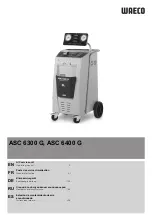
TECHNICAL INFORMATION
TRAMPOLINE S
If you have any questions, we’d be happy to help:
smb Seilspielgeräte GmbH Berlin in Hoppegarten
Fon.
+49 (0) 3342 50837-20
Technikerstraße 6/8
Fax.
+49 (0) 3342 50837-80
www.smb.berlin
DE-15366 Hoppegarten
09.04.2020
Page 4 von 9
2 Maintenance instructions
2.1 Maintenance intervals
Routine visual inspection
•
Check that the interior trampoline area (the space under the jump mat) is clear of sand or garbage. To
do this, unhook the jump mat from the frame (
see 2.2
) and remove any dirt present. The jump mat
should then be hooked back in.
The frequency should be guided by local conditions (High/low use, vandalism, air pollution, influences of
weather).
Since locations can differ significantly (public area, school, children’s daycare centre, etc.), no generally valid
statements can be made in this regard.
We reccomend that an assessment of the maintenance interval be determined based on experience on
site.
Operational inspection (every six months)
•
Check the play equipment for general damage or signs of wear and tear.
•
Check the inside of the trampoline for dirt (
see routine visual inspection
).
•
Check the condition of the jump mat, spring suspension fittings and the fall protection.
More information can be found on the next few pages and in Figures 3, 4 and 5.
Main inspection
The trampoline frame is made from 3-mm-thick, hot-dip galvanised sheet metal. As a result of this, a main
inspection can extend over a two-year period and can then include a check of the frame for corrision.
Information regarding the type plate
The type plate (plaque) is embedded in one of the fall protection plates which are glued onto the trampoline
frame. The type plate bears the details of the manufacturer and DIN standard, as well as a serial number and
a QR code that can be used to obtain further information.



























